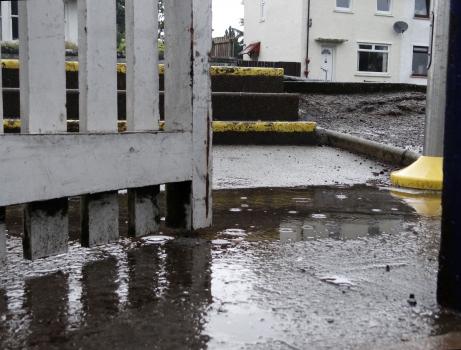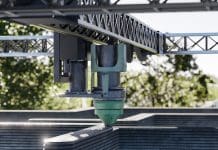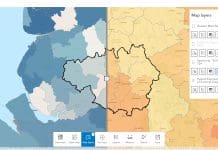The conversion of gardens and other vegetated areas to built-up surfaces – known as urban creep – in Edinburgh is an area that is poorly researched
The Centre of Expertise for Waters (CREW) has developed a method to map rates of urban creep and apply it to aerial photography for Edinburgh for 1990, 2005 and 2015.
The project also quantified urban expansion, which is the conversion of new land to urban areas. For example building housing estates on farmland.
This project is key to ensuring new development does not increase flood risk.
The research questions included:
What are the typical rates of urban creep for selected areas in Scotland?
To develop and test a transferable methodology for quantifying rates of urban creep in Scotland
Background
Knowing more about the factors that will influence flood risk is key to manage flood risk sustainably, now and in the future, by:
- Identifying where significant flood risks may arise in the future;
- Identifying if actions can be taken now to mitigate future changes;
- Making sure any actions implemented now are adaptable to future change;
- Identifying how future flood risks could change due to different investment scenarios; and
- Estimating the level of investment that would maximise benefits under different circumstances.
Many factors influence flood hazards and these can change over time. The main factors are climate change, population and land cover change.
The impacts of these hazards are that by 2080, 57,000 additional homes could be at risk due to climate change from all sources of flooding, with an additional 13,800 additional homes specifically from surface water flooding.
Also, it is key that the 350,000 new homes that are predicted to be constructed by 2037 have an effective land use planning policy in avoiding flood risk.
The report details the methods and results of a CREW funded project to provide SEPA with potential methods for mapping urban creep, and some estimates of rates of creep for Edinburgh.
The methods utilise aerial photography to map changes in impervious cover at the building plot scale – differentiating between new urban growth and urban creep. Upscaling of this mapping could provide more robust estimates of urban creep for Scotland.
The results of this study are important as it will contribute to the knowledge on future surface water flooding by considering climate change and urban creep scenarios. Also better knowledge of areas at risk and the factors influencing surface water flood risk, will enable improved management and mitigation.
Main Findings
Between 1990 and 2015 Edinburgh lost an average 11.27ha/year of vegetated land to urban land cover (from all types of change including urban creep and urban expansion). This is equivalent to losing over fifteen football pitches of vegetated land per year.
The average annual rate of urban creep in Edinburgh, between 1990 and 2015, is 6.44ha/year. This is equivalent to losing over eight football pitches of vegetated land per year.
The average annual rate of urban expansion in Edinburgh between 1990 and 2015 is 4.81ha/ year. This is equivalent to losing more than six football pitches of vegetated land per year.
The highest rates of vegetation loss across Edinburgh, due to urban creep are for detached houses. Semidetached houses and bungalows also contribute high rates of urban creep. Flats and terraced houses have lower rates of urban creep, with tall flats contributing the lowest rates.
Where the age of buildings is known, houses built between 1914 and 1945 contribute the highest rates of urban creep, across Edinburgh.







![[VIDEO] GBC network calls for boldness at COP29 Baku, Azerbaijan, where COP29 will take place and where the GBC Network have deirected their message](https://www.pbctoday.co.uk/news/wp-content/uploads/2024/11/iStock-513054348-1-218x150.jpg)




![[VIDEO] World’s largest crane lifts final ring at Hinkley Point C Big Carl, the world's largest crane, lifting the final liner ring for Hinckley Point C](https://www.pbctoday.co.uk/news/wp-content/uploads/2024/10/94747-218x150.jpg)

